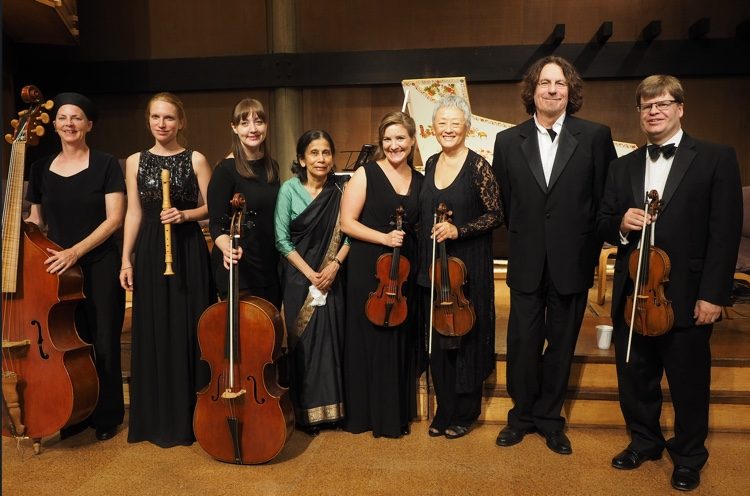
(Photo courtesy of Con Gioia)
By Anne E. Johnson
When François Couperin was born on Nov. 10, 1668, into a renowned musical family in France, surely no one suspected he’d be the one nicknamed “Couperin le grand,” as important to the Couperin legacy as J. S. Bach was to his family’s name. As he turns 350, François is still celebrated, and birthday parties are planned all over the globe.
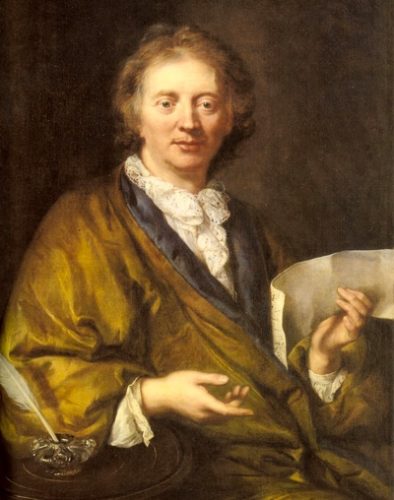
Many of the musical fêtes will feature the harpsichord, which is appropriate, considering that Couperin was among the most celebrated harpsichordists of his day. His book L’Art de toucher le clavecin remains a bible for period keyboardists, particularly those studying the French Baroque. That period is a specialty of Quebecoise musicologist, harpsichordist, and organist Geneviève Soly, who teaches at the University of Montreal and is the founder and artistic director of the ensemble Les Idées Heureuses (named after a piece by Couperin!).
“He was one of the greatest musicians ever, like Monteverdi or Mozart,” Soly said in a telephone interview. “There are very few names you can add to that list. Couperin could achieve exactly what he had in mind. I relate his spirit to God as a creator, the way everything is compressed into a short musical piece.”
But that concision is deceiving to listeners, Soly believes. “The audience hears this short piece and thinks, ‘Oh, that’s cute.’ The pieces seem so simple that a child could have written them.” One of her goals is to demonstrate to audiences just what a great and complex composer Couperin was.
On May 10 at the Montreal Museum of Fine Arts, she’ll perform a solo recital called Couperin and Graupner Reunited. As she’s done all season, she pairs the music of Christoph Graupner (1683-1760) with that of a more famous composer, in this case Couperin. The link between these two is the year 1722, when Couperin published his Third Book of Pieces for Harpsichord and Graupner his Monthly Fruits for Harpsichord.
“Graupner wrote in the French style perfectly,” Soly said, “and his knowledge of ornamentation was fantastic.” Her plan is to perform the two composers’ works “interwoven like a tapestry” so the audience can compare them. But don’t expect all fluffy clouds and lace cravats. “I prefer works with a darkness to them, when Couperin turns toward French music from an older generation, for example the allemande ‘La Superbe.’ I suspect that Couperin was not always happy. He seems like a very serious person.”
Béatrice Martin is another harpsichordist who sees deep meaning behind Couperin’s filigree. “Couperin seems to confide in us his deepest secrets, the depths of his soul,” she said. “We enter his poetic universe through pieces that transport us directly into the paintings of Antoine Watteau: ‘Les Plaisirs de Saint-Germain-en-Laye,’ ‘Le Carillon de Cythère,’ ‘La tendre Fanchon’…These evocative titles as well as his precise and inspiring indications (tendrement, gracieusement, noblement, rondement…) still speak to us and are incredibly moving, even today.”
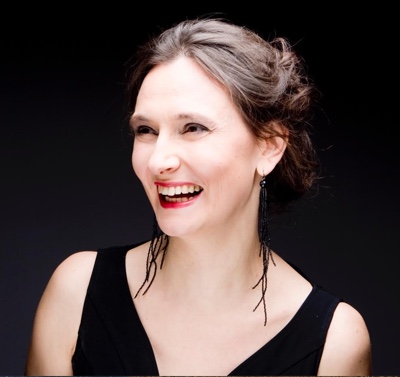
At her April 24 concert, to be presented by 28 Chairs at a Washington, D.C.-area venue still to be announced, the French-born Martin will share her love of this composer. She says she’s captivated by “the perfect balance of the forms, their diversity (he never ceased to explore the French and Italian styles and even their combination), the pictorial use of the harpsichord’s registers, harmonies which can be either very gentle or incredibly forceful…the list is endless!”
Martin is also committed to passing along the art of playing and appreciating Couperin’s music to her students. It’s not easy homework. “The more one studies it, the more one discovers its technical and musical demands,” she said.
On Feb. 8 in the Juilliard School’s Paul Hall, some of Martin’s Juilliard students will present a recital of Couperin pieces she assigned. Among the students is Polish harpsichordist Katarzyna Kluczykowska, who acknowledges the feat in front of her: “The biggest challenge of playing these pieces is a graceful execution of the ornaments. To make his compositions sounding simple and natural is a very demanding task. Another problem is the narration. The pieces have very particular titles like ‘The Mysterious Barricades,’ ‘The Nightingale in Love,’ ‘The Jacobin Somersaults.’ They portray the princes and princesses, theatrical works or the court’s little secrets and rumors. So, without context we can go in the totally wrong direction.”
But Kluczykowska knows the hard work is worthwhile. “One can learn a lot about how to play harpsichord (rather how to touch it), how to imagine the sound (we can’t hear the full sound while sitting at the keyboard), how to be extremely precise and have the fingers under total control.”
Francis Yun, her fellow student, agrees that the expectations can seem grim. “Your harpsichord touch needs to be incredibly sensitive to convey all the different characters and emotions,” he said. “And then there are the ornaments. There are so many of them — I sometimes call it ornament soup — and you have to execute them in a way that adds grace to the line.” But Yun also sees the rewards. “I find these pieces to be poetic, poignant, and filled to the brim with emotional richness.”
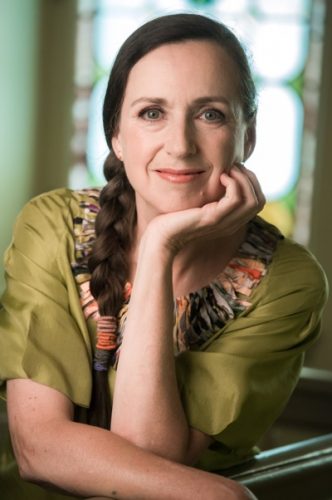
While Couperin is best known for his more than 200 solo harpsichord pieces, he also composed for other instruments — solo and ensemble — and occasionally voice. (Despite working for opera-obsessed Louis XIV, he wrote no operas.) Some of the birthday celebrations will include these other works. For example, on March 4 at the First Parish in Lexington, MA, Sarasa Music offers a recital of music for viola da gamba (Reiko Ichise) and baroque cello (Jennifer Morsches) by Couperin and others.
California-based ensemble Con Gioia presents François Couperin 350 on March 17 at the Boston Court Performing Arts Center in Pasadena. Aside from some solo pieces by both François, his uncle Louis, and his cousin’s son Armand-Louis, the group will play “Le Parnasse ou L’Apothéose de Corelli” in the version for strings and basso continuo and “L’Impériale” for string ensemble, oboe, and basso continuo. Harpsichordist and Con Gioia founder and music director Preethi de Silva says that the latter work “comprises a four-movement sonata da chiesa (chamber sonata) followed by a multi-movement suite, thus a result of Couperin’s desire to unite, or as here, juxtapose Italian and French musical forms.”
For de Silva, Couperin’s importance in music history cannot be overstated. “Couperin’s lifespan is divided almost equally between the 17th and 18th centuries,” she said, “and he is one of the major figures linking the musical tastes of those times in the occidental world.” Her praise echoes that of most harpsichordists: “Couperin’s keyboard music conveys a certain nobility of expression throughout, whether in refined exuberance or conveying the depths of inner emotion. Indeed, in my opinion, he himself achieved the pinnacle (Le Parnasse) of bon goût (‘good taste’).”
Another enterprise will be spreading Couperin’s good taste in ensemble music. The composer is the star of the 2018 Pacific Baroque Festival in Victoria, Canada, Feb. 15-18, this year titled Le Grand Siècle: Music in the Glow of the Sun King. To festival artistic director Marc Destrubé, part of Couperin’s legacy is the impression he made on later generations. “Couperin’s influence was significant,” Destrubé said, “extending most notably beyond J. S. Bach, who copied out and arranged some of his keyboard pieces, to Richard Strauss, Ravel, and Brahms, who performed his music and oversaw the first complete edition of his keyboard works.”
Destrubé also notes a socio-political aspect. “If instrumental music can ever be political, then one might see a humanistic purpose in Couperin’s attempts to reconcile in some of his compositions the hotly-contested French and Italian styles of the day, or perhaps to envisage a united Europe through his collection of trio sonatas Les Nations.”
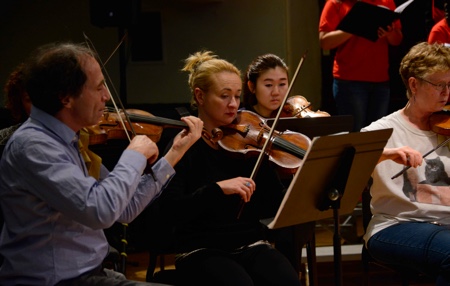
The Pacific Baroque Festival’s offerings will include Couperin works mixed in with those of Leclair, Marais, Rameau, and Mondonville. “We will devote one evening exclusively to Couperin’s music,” said Destrubé, “contrasting the Leçons de Ténèbres, his last liturgical work and one of the most sublime and mystical expressions of religious feeling in baroque music, with movements from ‘L’Impériale’ (from Les Nations), courtly music par excellence.”
French-Canadian soprano Hélène Brunet will be the guest for the Leçons de Ténèbres. Her background is not incidental, according to Destrubé. “Although the sung texts in the festival programs are largely in Latin, not French, there is unquestionably something elusive about French Baroque music, however ‘Italianate’ in style, and it is somehow easier to grasp and convey its subtleties for those whose native tongue is French.”
Across the Pond and Beyond
Not surprisingly, France will host many Couperin concerts in 2018. For example, Christophe Rousset and his period-instrument ensemble Les Talens Lyrique (who will finish recording all of Couperin’s chamber works this year) will play Les Nations at Rouen’s Chapelle Corneille on Jan. 17. In the company’s season brochure, Rousset says of Couperin, “He exhausts a poetic subject with his music the same way Proust did with his literature.”
If you want atmospheric authenticity, how about a Couperin concert in the Chapelle Royale at Versailles? On March 24, La Poème Harmonique will be joined by soprano Deborah Cachet and mezzo-sopranos Eva Zaïcik and Giuseppina Bridelli for Trois Léçons de ténèbres.
French academia gives Couperin the nod at the Sorbonne June 20-23. In the composer’s honor, the Institut de recherche en musicologie has chosen the French Baroque as its 2018 conference theme. (The proposal deadline is Jan. 31.)
What might be less expected than Couperin’s popularity in France is the fervor that seems to have gripped the U.K.
The London Festival (formerly the known as the Lufthansa Festival) of Baroque Music (May 11-19) will have a French theme, “Treasures of the Grand Siècle.” Although few program details had been announced at the time of this writing, it is known that the guest artistic director for 2018 is conductor Sébastien Daucé, and Couperin’s 350th will be celebrated.
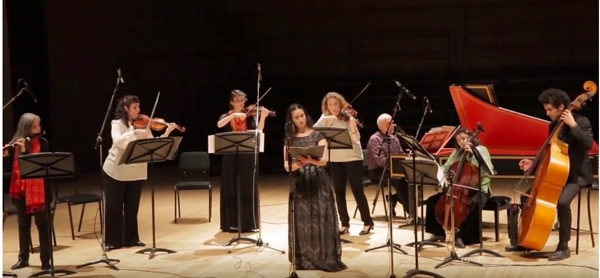
As part of the St. Albans International Organ Festival, James Johnstone will play Couperin’s Messe propre pour les Couvents de religieux et religieuses. And on the composer’s actual birthday, Nov. 10, a host of keyboardists will come together at Emmanuel College, Cambridge, for a Couperin blow-out.
Other European countries are celebrating, too. In Stockholm, Håkan Dahlén will give an organ recital interspersing pieces by Couperin with movements of Jean Guillou’s 1978 work Jeux d’Orgue on Jan. 19 at Konzarthuset Stockholm’s Stora Salen.
Harpsichordist Jean Rondeau performs an all-Couperin program in Barcelona’s L’Auditori Sala Oriol Martorell on March 8, featuring the First and Second Books of Pièces de clavecin. And Bachfest Leipzig will present the winner of the 2018 Leipzig International J.S. Bach Competition in a recital celebrating Couperin.
The composer’s esteem reaches beyond Europe and North America. In April and May, the Jerusalem Baroque Orchestra, under the direction of David Shemer, takes a program called “French Exotica” (advertised as marking Couperin’s birthday) to three Israeli cities. Russia gets in on the festivities when Fedor Stroganov presents a solo harpsichord recital at the D. D. Shostakovich St. Petersburg Academia Philharmonia on Jan. 23.
This is by no means an exhaustive list of Couperin-related events. And it doesn’t even mention the dozens of scheduled performances of Ravel’s Tombeau de Couperin in every possible arrangement (including George Balanchine’s 1975 choreography at New York City Ballet in April). Plus, some 2018 series and festivals have yet to announce their details, so there may be even more birthday cakes baked for our dear François.
No one could deserve it more, according to many an enamored musician. As Geneviève Soly put it, “All of Couperin’s pieces are masterpieces. They are a joy to play. They are a crown of jewels.”
Anne E. Johnson is a freelance writer based in Brooklyn. Her arts journalism has appeared in The New York Times, Classical Voice North America, Chicago On the Aisle, and Copper: The Journal of Music and Audio. For many years she taught music history and theory in the Extension Division of Mannes School of Music.

